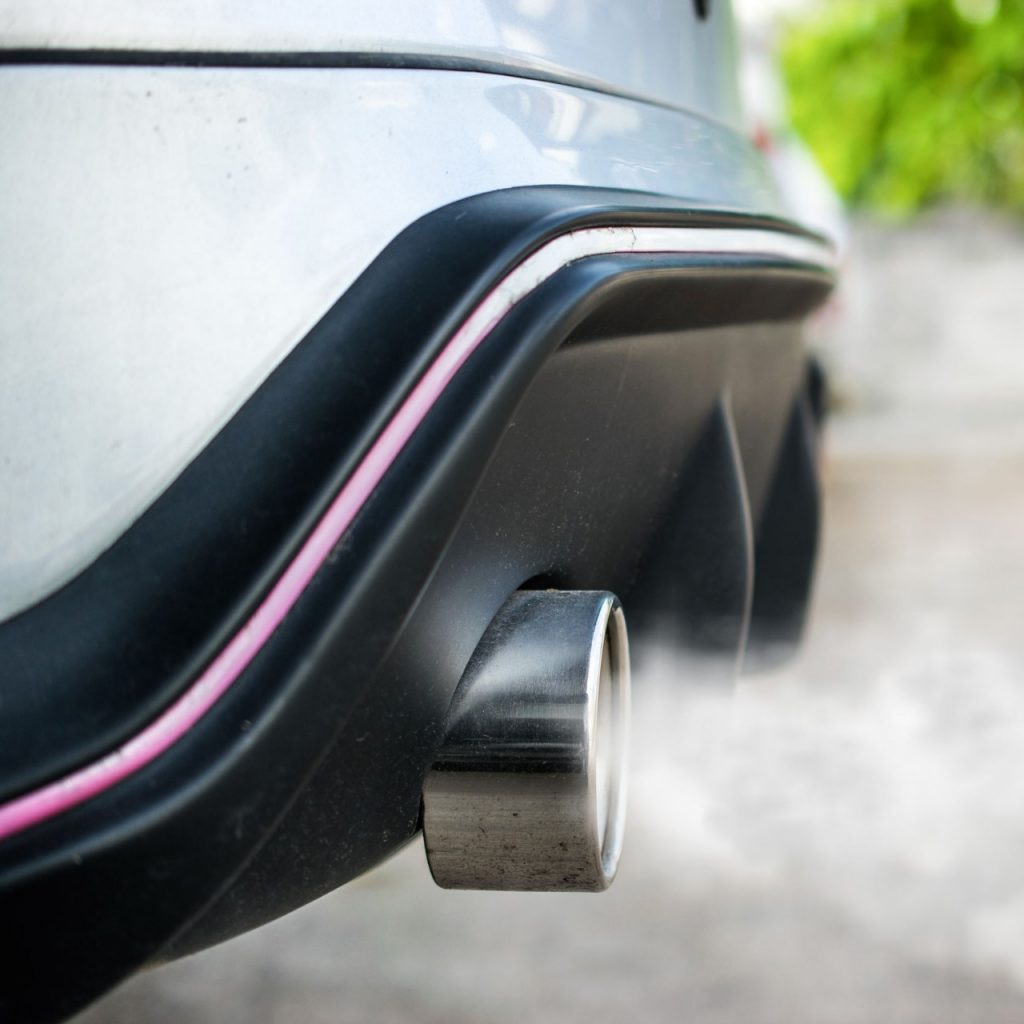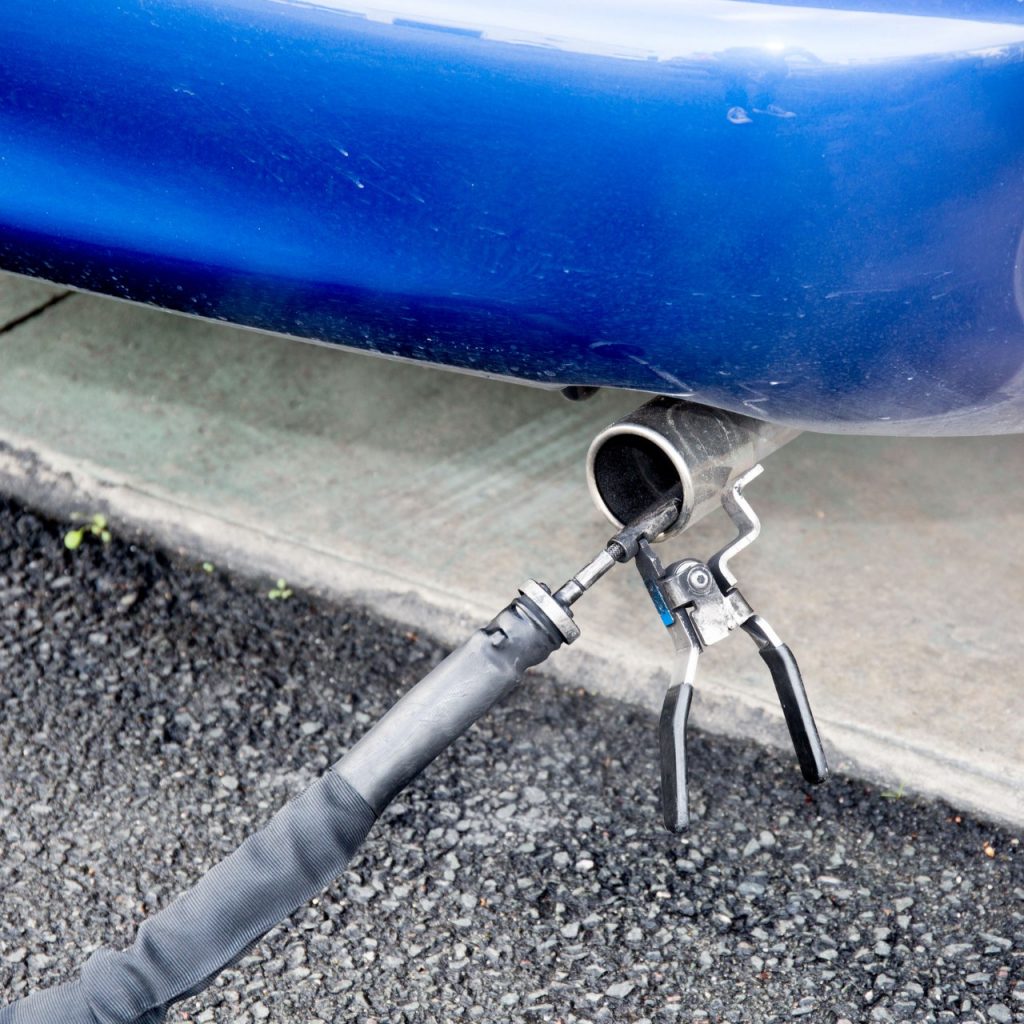
What gases are emitted by cars?
Car emissions are air pollution is various gases that emitted into the general environment when a car or any motor vehicle is running that oxygen sensors read. Those gases lower the air quality we breathe overall with photochemical smog, which has been linked to several health problems.
The average passenger vehicle produces roughly 4.6 metric tons of carbon dioxide annually. That number that can vary based on the type of fuel used, the fuel use of the vehicle, and how many miles the car is driven. The following list result from car emissions explained:
- Particulate matter – this creates the color of smog and contains metals and soot in the form of fine particles that are smaller than a human hair’s diameter.
- Hydrocarbons – When exposed to sunlight, a reaction of these pollutants with nitrogen oxides form ozone at ground level and is the main ingredient in smog.
- Nitrogen oxides – These pollutants help form ozone and particulate matter.
- Carbon monoxide – This gas is colorless, odorless, and poisonous that is formed by the burning of gasoline or other fossil fuels that emitted vehicles.
- Hazardous air pollutants -These chemical compounds include acetaldehyde, Benzene, and 1,3-butadiene.
- Greenhouse gases – This is carbon dioxide that is emitted by vehicles and other modes of transportation such as airplanes, freight, and trains.
- Sulfur dioxide – This gas comes from sulfur-containing fuels such as diesel.
How does car emissions affect human health?
Car emissions are a contributing factor to air pollution, as are airplanes, trains, and any mode of transportation that requires fuel. That air pollution is created as these modes of transportation are going down the road and as they are being manufactured, refueling, and when they are being disposed of. Refining the fossil fuels that make the gas these vehicles use and how that gas is distributed to the places where they get their fuel, such as gas stations also contribute to the pollution. There are two groups of pollution:
- Primary – what is emitted immediately into the atmosphere.
- Secondary – are the results of the chemical reactions of those pollutants.
The following is how these major pollutants that come from car emissions and other vehicles to affect our health and have been associated with half of all cancers suffered by humans:
- Particulate matter penetrates into the lungs.
- Hydrocarbons are beneficial in the upper atmosphere but at the ground level, they irritate, resulting in coughing and choking, and reduced lung capacity.
- Nitrogen oxides irritate the lungs, weakens the body’s defenses to fight respiratory infections like the flu and pneumonia.
- Carbon monoxide blocks oxygen from the vital organs like the brain and heart and has been associated with chronic illnesses and affecting fetuses and newborn children.
- Sulfur dioxide the fine particles formed by this matter has been found to pose a large health risk to asthmatics and young children.
It is because of these connections to human health that have deemed car emissions bad for the environment. These are reasons for the increased pleas by environmentalists for changes and stricter laws in car emissions and climate change actions, and the motivation to manufacturer a car without emissions.
What can cause a car to fail an emissions test?
Usually, as some say, where there is smoke, there is fire. However, when it comes to cars, what comes out of the tailpipe isn’t always smoke, but we know inside the engine, there is a form of” fire”. There are basic car emissions standards set by the Environmental Protection Agency for all cars and other vehicles sold, but it is up to each state to monitor car emissions. Still, there are some states to do not use any type of car emissions testing, while others have employed strict “smog check” testing.
A vehicle that does not pass the car emissions testing could be for any of the following reasons:
- Faulty oxygen sensors or air metering malfunction.
- Evaporative emissions.
- Catalytic converter.
- Missing or weak spark.
- Temperature inconsistency.

How long should I drive my car before the emissions test?
The recommendation by experts in car emissions is 20 minutes before going to the smog station. A few tips that can help your car pass the car emissions testing are:
- If your vehicle is not driving, functioning, running properly, do not take it to be tested.
- If the check engine light is on, do not take it to be tested.
- Make sure the tires have the proper amount of air.
- Have the oil changed before going to emission testing.
- Change the oil in your vehicle.
- Use a fuel additive.
If your vehicle has not been maintained and necessary maintenance performed regularly, these tips are not any guarantee your vehicle will pass any car emissions testing it may be subjected to.
How can I reduce my car emissions?
One answer is to buy a “green vehicle”, but we all can’t do that. So, what can you do that will reduce your car emissions. Here are 11 things that experts advise:
1. Regular car servicing.
2. Lighten the load in your vehicles.
3. Use the proper oil.
4. Don’t drive aggressively.
5. Keep tires at the proper air pressure.
6. Drive the speed limit.
7. Turn off electric components like the AC.
8. Shift gears sooner in standard transmissions.
9. Don’t sit at an idle for long periods.
10. Combine trips and make shorter trips.
11. Use fuel additives.
Your home is a big important investment and your car is the next biggest, an important investment. Taking care of these investments only makes sense. If you take care of your car, car emissions testing won’t be a concern and will help the environment. Dial 949-583-0811 today for car emissions testing in Mission Viejo, CA.